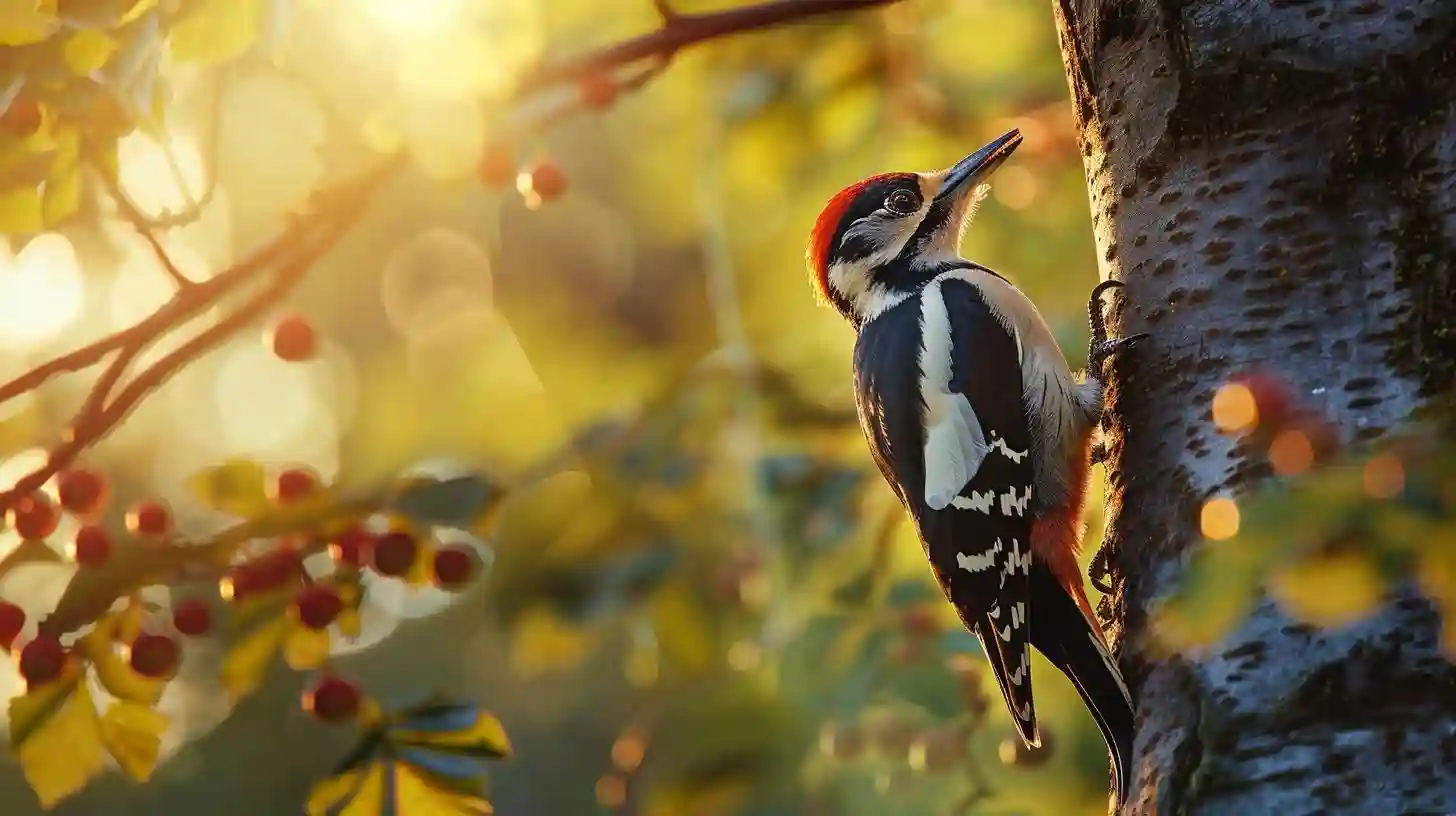
Woodpeckers are extraordinary creatures that capture the imagination and admiration of bird enthusiasts and casual observers alike. These birds, belonging to the family Picidae, are known for their distinctive behavior and unique anatomical adaptations which enable them to thrive across diverse environments. Their presence often evokes curiosity and wonder, revealing much about the intricate balance of ecosystems, the marvel of evolutionary biology, and the complex interplay of organisms within nature.
One of the most striking characteristics of woodpeckers is their ability to peck wood with great precision and strength. This behavior is not merely for show; it serves several essential purposes. Primarily, woodpeckers peck to find food. Their primary diet consists of insects and larvae that reside within trees. By excavating into the bark and wood, they uncover hidden food sources that are otherwise inaccessible to other birds and animals. This behavior significantly reduces the population of these insects, which can be detrimental to the health of the trees. Consequently, woodpeckers play a crucial role in maintaining the balance of their habitats by controlling insect populations and contributing to the health of woodlands and forests.
Another important reason woodpeckers peck wood is to create nesting sites. Their strong beaks and robust neck muscles allow them to carve out cavities in dead or decaying trees, providing them with safe and secure locations to lay eggs and raise their young. These cavities are often reused by the same woodpecker family for multiple breeding seasons or may be taken over by other bird species and small mammals once abandoned. Therefore, woodpeckers inadvertently provide valuable nesting habitats for other creatures, enhancing biodiversity within their ecosystems.
Woodpeckers also engage in pecking as a form of communication. Drumming, a rapid series of pecks on resonant surfaces, serves as a means of establishing territory and attracting mates. The sound produced by drumming can carry over long distances, signaling the presence and fitness of the woodpecker to potential competitors and partners. Each woodpecker species has its own distinct drumming pattern, much like a call or song in other bird species. This unique drumming behavior showcases the complexity of avian communication and the sophisticated means by which these birds interact with their environment and each other.
The anatomy of woodpeckers is specially adapted to support their pecking behavior. Their beaks are chisel-like, designed to bore into wood with minimal effort. Unlike other birds, the hyoid bone in woodpeckers wraps around the skull, providing additional support to the head and reducing the impact of the repeated blows. Furthermore, they possess a unique cranial structure that absorbs and dissipates the shock of pecking, preventing brain injury. The muscles at the base of the beak are highly developed, allowing woodpeckers to exert considerable force with each strike. Additionally, woodpeckers have zygodactyl feet—two toes pointing forward and two backward—which provide stability and grip as they climb and cling to tree trunks. Their stiff tail feathers also act as a prop, helping them maintain balance during pecking.
The diversity among woodpecker species is remarkable, with over 200 species spread across various continents, except for Australia, Madagascar, and the polar regions. Each species exhibits unique behaviors, plumage, and ecological preferences. For example, the pileated woodpecker, one of the largest in North America, boasts a striking red crest and distinctive black and white plumage. Its powerful pecking can leave characteristic rectangular holes in trees. In contrast, the diminutive downy woodpecker, found in a wide range of habitats, from forests to urban parks, uses its smaller size to access narrow crevices and branches that larger woodpeckers cannot reach. The great diversity of woodpecker species highlights the adaptability and evolutionary success of this avian family.
Woodpeckers have also found their way into human culture and folklore. In various cultures, they are often symbols of communication, determination, and persistence due to their relentless pecking. Some Native American tribes, for instance, view the woodpecker as a figure representing hard work and industriousness. In European folklore, woodpeckers are sometimes associated with weather predictions or omens, reflecting the bird's deep-rooted presence in human consciousness. Their distinctive drumming and striking appearance have made them subjects of numerous artistic representations and literary references throughout history.
Despite their adaptability, woodpeckers face numerous threats in today's changing world. Habitat destruction, primarily due to deforestation and urbanization, poses a significant risk to woodpecker populations. Many species rely on old-growth forests and dead trees, which are often removed in managed landscapes, reducing available nesting sites and food sources. Climate change also impacts the distribution and behavior of insects, which can affect woodpecker feeding patterns. Furthermore, pesticide use can lead to a decline in insect populations, directly impacting woodpecker food availability. Conservation efforts aimed at preserving natural habitats, promoting sustainable forestry practices, and protecting old-growth forests are crucial for the survival of woodpecker species. Public awareness and education about the ecological roles of woodpeckers can also help garner support for conservation initiatives.
Woodpeckers are fascinating birds that play vital roles in their ecosystems. Their pecking behavior serves multiple purposes, including foraging, nesting, and communication, underpinned by unique anatomical adaptations. The diversity and adaptability of woodpecker species highlight their evolutionary success and ecological importance. Moreover, their presence in human culture as symbols of persistence and hard work underscores their significant influence. However, the challenges posed by habitat loss, climate change, and pollution necessitate concerted conservation efforts to ensure these remarkable birds continue to thrive. Woodpeckers, with their remarkable adaptations and ecological contributions, remind us of the intricate interconnections within nature and the importance of preserving our natural world.